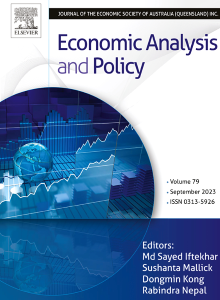Navigating total-factor carbon emission efficiency in the digital era: A case study from industry structure, environmental regulations, and trade spillover
Abstract
Digital technology innovation has become essential to China's sustainable, low-carbon social development strategy. However, its spatial impact on carbon reduction and efficiency is unclear. This study innovatively utilizes patent search to define digital technology innovation and spatial econometric modeling to assess its association with total-factor carbon emission efficiency (TCEE) in 286 Chinese cities. There are some exciting research findings: (1) Digital technology innovation effectively accelerates local TCEE and contributes to TCEE in surrounding cities through spatial spillover effects. (2) The heterogeneous results show that digital technology innovation increases the local TCEE in the western region, inhibits the local TCEE in the eastern and northeastern areas, and shows apparent positive spillover effects in both the eastern and western areas; the positive effects of digital technology innovation on TCEE in non-resource cities and small cities are all-encompassing. (3) Both industrial structure upgrading and optimization can enhance the spatial spillover effect of digital technology innovation on TCEE; both formal and informal environmental regulations (ER) can effectively accelerate the TCEE enhancement effect of digital technology innovation on local and surrounding cities. (4) Digital technology innovation affects the TCEE of trading partners through domestic bilateral trade. This manuscript provides an actionable reference for measuring digital technology innovation and China's path to achieving an efficient low-carbon pathway.

 求助内容:
求助内容: 应助结果提醒方式:
应助结果提醒方式:


